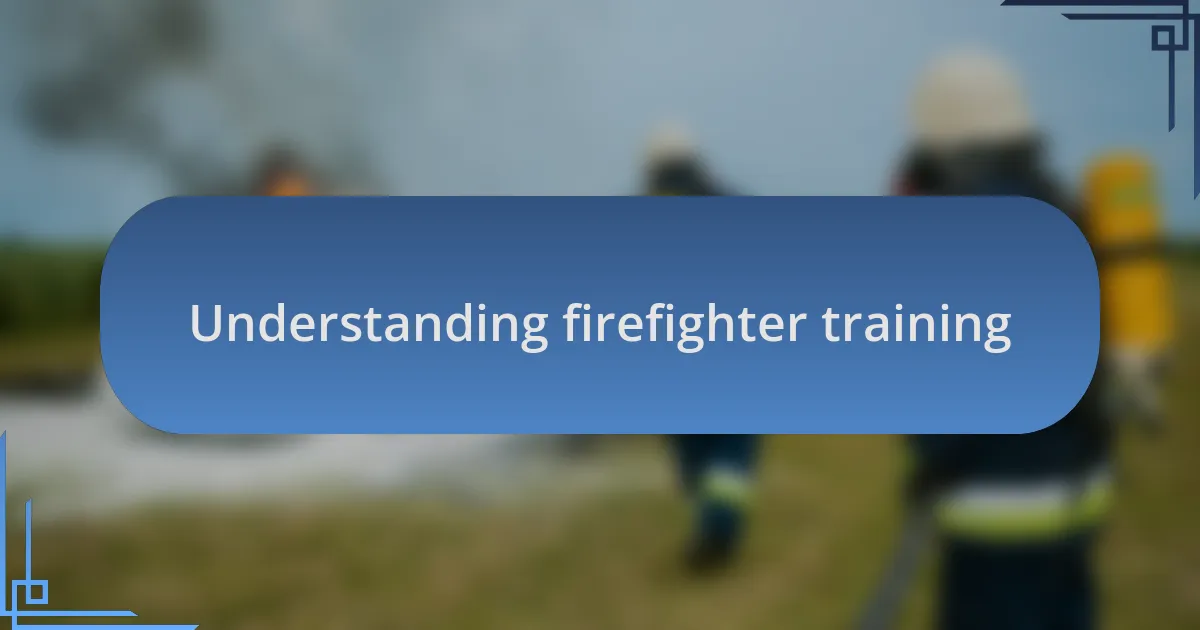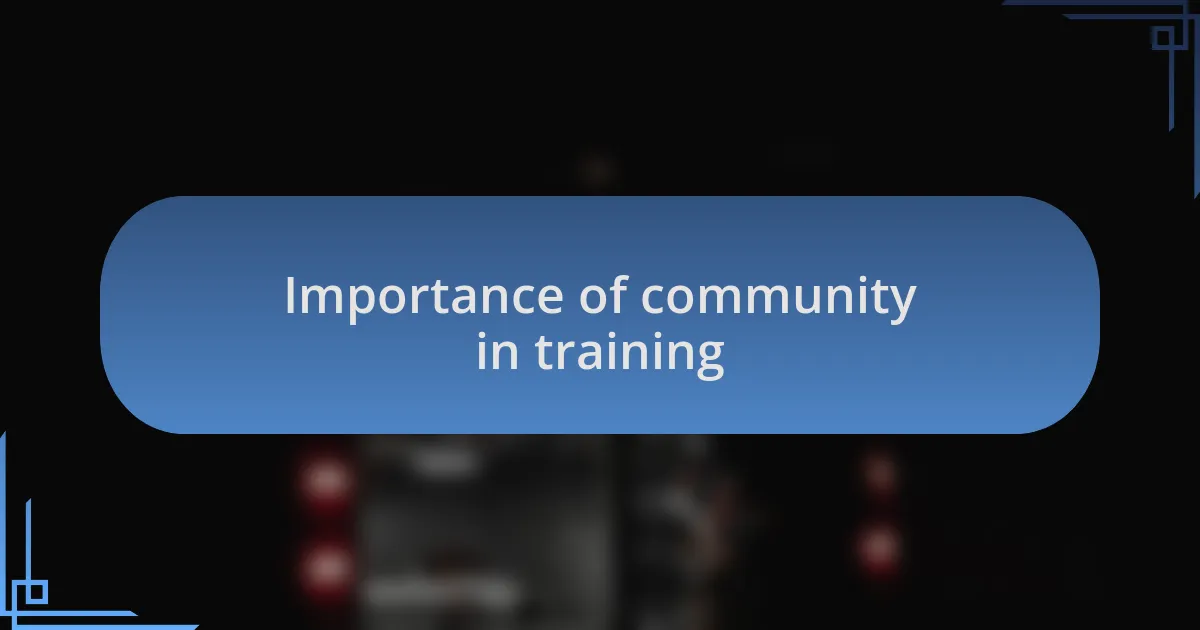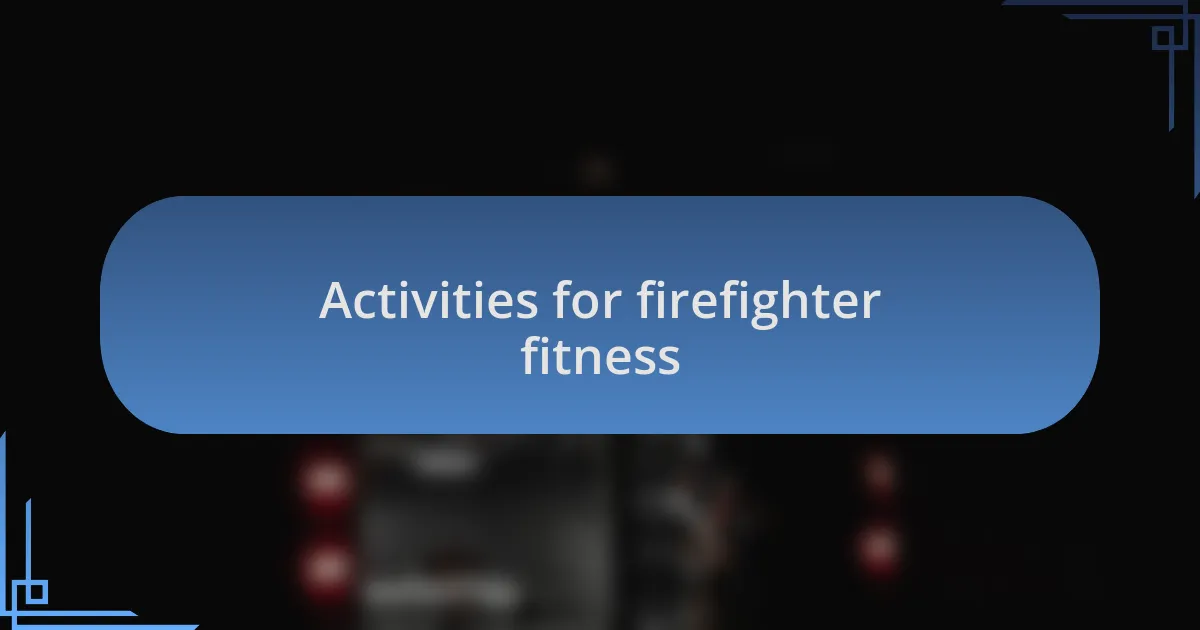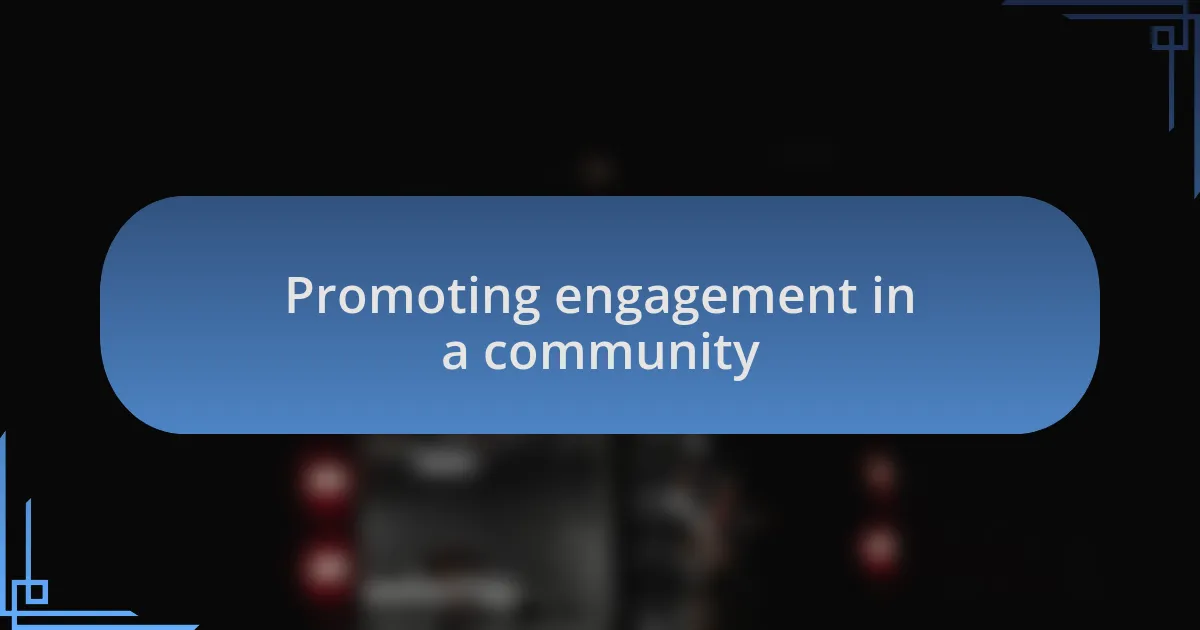Key takeaways:
- Firefighter training develops physical, mental, and emotional skills, fostering confidence and teamwork under pressure.
- Camaraderie and support among trainees enhance motivation and create lasting bonds essential for facing emergencies together.
- Engaging activities, such as circuit training and friendly competitions, promote fitness and strengthen team unity.
- Building an inclusive community involves regular engagement, personal outreach, and creating safe spaces for open communication.

Understanding firefighter training
Firefighter training is not just about mastering the physical demands of the job; it encompasses a wide range of skills vital for saving lives and protecting communities. I remember my training days vividly, particularly the first time I faced a simulated fire. The adrenaline rush was unparalleled, but so was my intense desire to learn every technique. It made me realize that each drill was not just a test; it was a step toward building confidence in real-life emergencies.
What many don’t understand is that this training is designed to prepare us mentally as well. We often practice under immense pressure, learning how to stay calm and make quick decisions amid chaos. Have you ever pulled off a challenging task while feeling overwhelmed? Imagine doing that with lives at stake. That’s what we face, and those moments of stress in training help solidify the mindset required in the field.
Equally important is the camaraderie developed during the training process. Working alongside fellow recruits fosters a sense of trust and support that is crucial in emergencies. I recall late-night study sessions, where we shared stories and aspirations, solidifying bonds that have lasted well beyond the academy. These relationships are essential; they build a team spirit that echoes through every challenge we encounter as firefighters.

Importance of community in training
Having a strong community during training is vital to personal and collective success. When I think back to my experience, those moments spent with teammates created a shared sense of purpose. We were not just individuals training for the same job; we were a unit facing challenges together. For instance, during a particularly grueling drill, my partner struggled with a new technique. Instead of leaving him to fend for himself, we rallied around him, sharing tips and encouragement. That collective effort not only boosted his confidence but also reinforced the belief that we are stronger together.
The emotional support that comes from being part of a community cannot be overstated. I can recall days when exhaustion set in, making it hard to keep going. It was the words of encouragement from my training partners that reignited my determination. In those moments, I learned that it’s perfectly okay to lean on others. It’s a fundamental aspect of firefighter training—recognizing that our individual strengths can complement one another, lifting us all to higher levels.
Moreover, the bonds formed during training often lead to lasting friendships that extend beyond the academy walls. These relationships provide a safety net in high-stress situations when we eventually face the unpredictability of our jobs. Reflecting on my own journey, I realized that we all carry a piece of each other’s strength in our hearts when we step into the line of duty. Isn’t it empowering to think that our community not only supports our growth but also becomes part of our identity as firefighters?

Activities for firefighter fitness
Firefighter fitness is about more than just building physical strength; it involves engaging in activities that enhance endurance and camaraderie. One of my favorite drills involves circuit training, where we rotate through various exercises such as ladder climbs, hose drags, and agility drills. It’s incredible how these high-energy sessions forge not only our stamina but also a sense of unity as we push through together.
I remember one session where we decided to add a friendly competition element to our workout. We split into teams and challenged each other in a scenerio-based endurance course. The laughter, the playful trash talk—it made the sweat worthwhile. Even though it was tough, having my teammates there kept me motivated. Would I have completed that course solo? Probably not. But with them, each obstacle felt conquerable.
Incorporating team activities into our fitness routines is crucial. Activities like group runs or obstacle courses foster a spirit of togetherness that can transform training into something truly memorable. When we finish one of these sessions, the pride we feel in supporting each other reinforces our commitment to the job. Every drop of sweat shared becomes a stitch in the fabric of our firefighter community, bonding us in ways that will help when the real emergencies arise. How powerful is it to know that our workouts do more than build muscles? They strengthen our connections as a team, ready to face challenges head-on.

Promoting engagement in a community
Creating a vibrant community requires intentional efforts to promote engagement among its members. In my experience, hosting regular meet-ups, whether virtual or in-person, can spark enthusiasm and strengthen bonds. I recall organizing a barbecue following a particularly grueling training week, and the relaxed atmosphere allowed for open conversations and support that deepened friendships. Just imagine how different our training would feel without that camaraderie—would we be as motivated to show up consistently?
Moreover, nurturing an environment of inclusivity is vital. By encouraging everyone to share their personal fitness journeys, we create a tapestry of experiences that resonate with all members. I still remember the moment a newer firefighter shyly shared her struggle with completing a mile run. The group rallied around her with tips, support, and ultimately, a shared sense of victory when she crossed the finish line weeks later. Isn’t it incredible how these small moments can cultivate loyalty and a sense of belonging in our community?
In addition, leveraging technology can significantly enhance engagement. I’ve found that using group messaging platforms allows us to share achievements, challenges, and fitness tips in real-time. This constant communication keeps everyone involved, even during downtime between training sessions. Think about it—how much easier is it to find support when you have a team cheering you on, even from a distance? Those daily interactions create a rhythm of motivation that propels us forward together.

Challenges faced in community building
Building a fitness community isn’t without its hurdles. One significant challenge I faced was getting everyone on the same page regarding goals and expectations. During our initial group discussions, I noticed some members were eager to push their limits, while others felt overwhelmed by the intensity. It took honest conversations and adjustments to find a balance that respected individual comfort levels while still fostering a sense of collective ambition. Isn’t it fascinating how aligning diverse motivations requires continuous effort and adaptation?
Another unexpected obstacle emerged when trying to maintain momentum within the group. I recall a period when attendance at our training sessions began to dwindle. It was disheartening to see faces missing, especially after the energy we built together. To combat this, I focused on personal outreach—checking in with members individually. Those conversations revealed various life challenges affecting their participation, reminding me how essential it is to prioritize emotional connections over numbers. Have you ever felt that a simple, genuine check-in can revive someone’s commitment?
Additionally, I wrestled with the challenge of fostering a safe space for all voices. I remember a time when a few members hesitated to share their thoughts during group meetings, fearing judgment. Creating an atmosphere of trust became imperative. I initiated “open mic” sessions, encouraging members to voice concerns or suggestions without any fear. This tiny shift transformed our dynamic. Reflecting on your experiences, how can creating spaces for vulnerability elevate a community’s strength and solidarity?